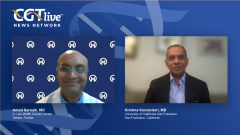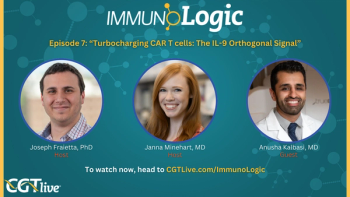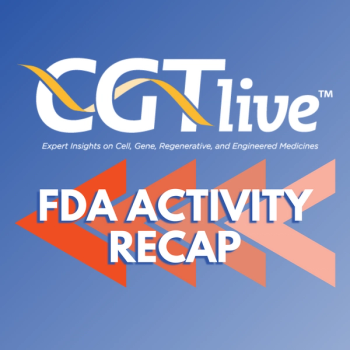
Results From the C-144-01 Trial and Potential Impact on Clinical Practice
Expert perspectives on results from C-144-01, which utilized the TIL therapy lifileucel in the setting of metastatic melanoma, and situations in which the regimen might be used in clinical practice.
Episodes in this series

Transcript:
Amod Sarnaik, MD: The next abstract we would like to discuss is a multicenter, single-arm, phase 2 study involving TILs [tumor-infiltrating lymphocytes] in the treatment of advanced treatment-refractory melanoma. This was a study that was sponsored by Iovance [Biotherapeutics]. The study had 153 patients, so it’s the largest study of TILs in melanoma that we’re aware of. The patients were heavily pretreated with 3 median lines of prior therapy. The reported response rate was 31%.
All patients had metastatic melanoma that was refractory to PD-1 antibody-based therapy. And the median duration of response was not reached at a median follow-up of 36 months. The 12-month overall survival rate was 54%. And there was a plateau of the Kaplan-Meier curve very commonly seen with immunotherapy. The trial was a massive undertaking. It involved tumor harvest from around North America with centralized manufacturing.
The benefit of this study is it demonstrates the feasibility that we can harvest cells from patients at local cancer centers that do not have manufacturing capabilities of TIL on site. The tumor can be shipped centrally where manufacturing occurs and then shipped back to the originating center for patient treatment. This is convenient for the patient as they don’t have to travel as far. They can go to a regional cancer center that’s able to treat patients with the lymphodepletion, with TIL, and IL-2 [interleukin-2] as we discussed, but they don’t have to go all the way to a cancer center that has a manufacturing facility on site, which as you know can be quite expensive. The data from the study are being reviewed by the FDA, and we’re cautiously optimistic that we’ll get regulatory approval, but that’s still under scrutiny.
Krishna Komanduri, MD: This is really important, and I think barring something unexpected, many of us in the field are recognizing that this is not the end of a long road, but I would say a major milestone in a long road. It started with work in Steven Rosenberg’s MD, PhD, laboratory to develop and commercialize cellular therapies that are not engineered but come from the patient’s own tumors. I thought it was exciting that not only did you show the ability to broadly do this, because I think the logistic feats of scale in a trial like this are not insignificant. Manufacturing has been something that’s quite important in the ability to do this at scale, and it’s significant. We’ve seen this again in the context of other very promising therapies, even approved therapies for CARs [chimeric antigen receptor] T-cell therapies, that we’re having a hard time getting those therapies to patients. So, the fact that it was feasible is something that you and the other study authors should be commended for.
I thought that significantly you also had a good follow-up. You had a median follow-up that was over 2 years, the median duration of response was not reached, and there were very significant fractions of patients who had responses for a long time, greater than 18 months. I think that not only was this a breakthrough in terms of potential and feasibility, but I was quite impressed by the frequency of the responses with really good follow-up. I don’t know if you want to comment further on what you think about what this means for patients. And where would this go in, I think that’s the other key question for our audience. Are these going to be upfront therapies for melanoma, or where are they going to come in? Do you want to talk about that for a second?
Amod Sarnaik, MD: Yes, absolutely. There’s no question that PD-1 antibody-based therapy has revolutionized the treatment of melanoma as well as non–small cell lung cancer. I think using it as frontline therapy sets the bar pretty high. The same sponsor does have a clinical trial of concurrent TIL plus PD-1 antibody in the frontline setting. The logistic issues are No. 1. At least in this country, most patients do get PD-1 antibody-based therapy in the community upon diagnosis and are then referred to the regional cancer center. So, we tend to see patients who have already had frontline therapy, and it makes a combination PD-1 plus TIL trial in the treatment-naïve setting logistically challenging in terms of accrual.
It turns out there was a clinical trial conducted in Europe, where PD-1 antibodies are a bit more restricted, that was published by John Haanen, MD, PhD, et al, and recently published in the New England Journal of Medicine, and they found a 49% response rate of TILs compared to a 20%-range response rate with ipilimumab. Some of those patients were in the second line, but some of them were either in the front line or recently progressed on adjuvant PD-1. So, I think the earlier line of therapy you get TIL into, the higher the responses. But whether TILs for melanoma can really reach the frontline is still in question.
The other issue to think about is the time it takes for the TILs to manufacture. The sponsor of this trial, Iovance, has shortened the manufacturing to 22 days, and adding a week of lymphodepletion, the patients are being treated around 30 days from the TIL harvest. That’s a relatively short period of time, but unfortunately, sometimes we do see patients progress while they’re waiting for therapy. Other more traditional TIL manufacturing strategies have taken 6 weeks or longer, and that’s a lot more of a challenge to have a patient wait for their treatment when they can get something off the shelf like PD-1 antibody. So, the jury’s still out. There can be modifications to TILs that may boost efficacy so it surpasses PD-1 antibody-based therapy, and shortening the time to treat, as was done by Iovance, is certainly another breakthrough of this trial that should be highlighted.
Transcript edited for clarity.
Newsletter
Stay at the forefront of cutting-edge science with CGT—your direct line to expert insights, breakthrough data, and real-time coverage of the latest advancements in cell and gene therapy.













































